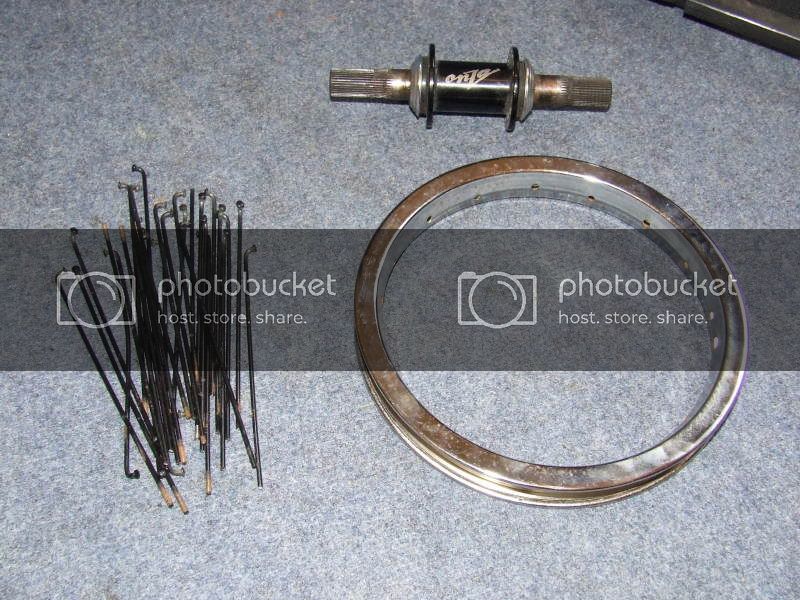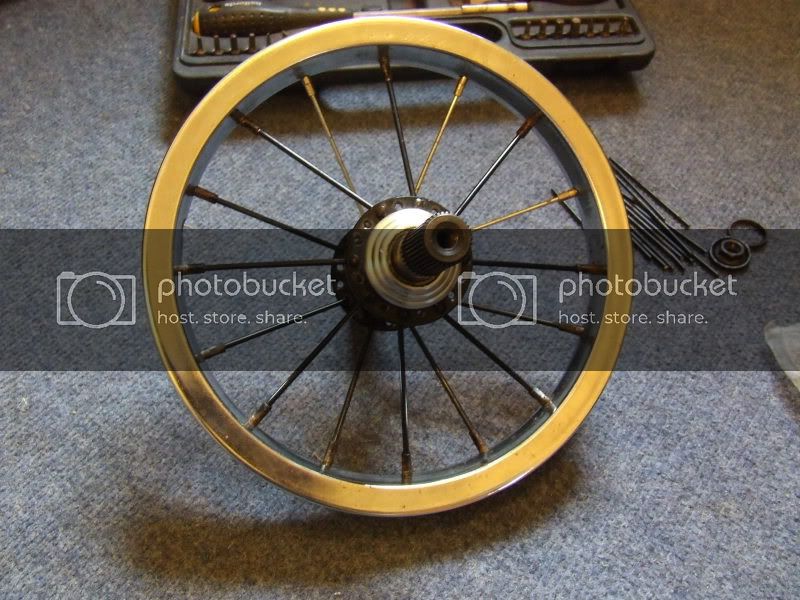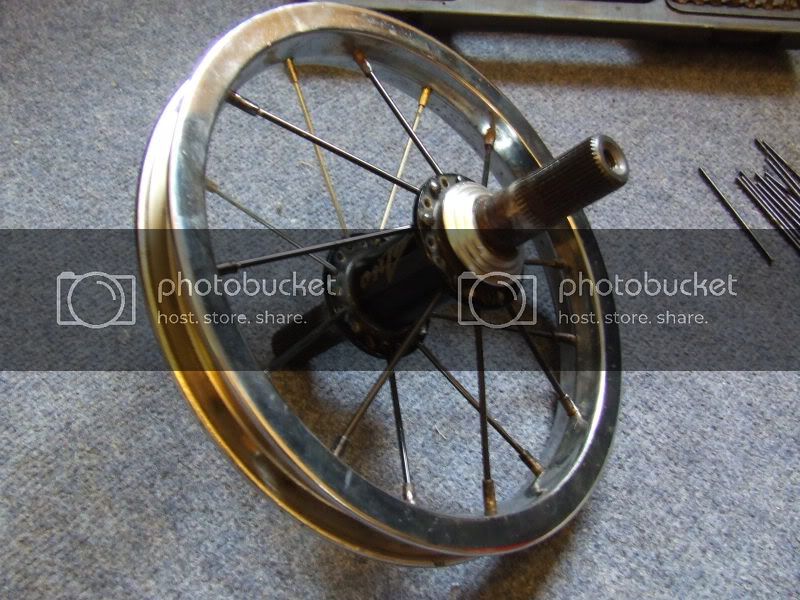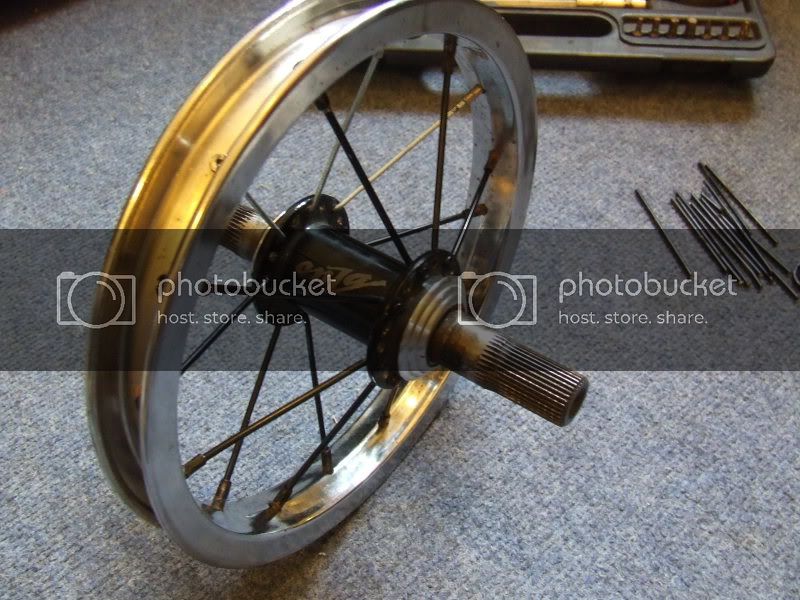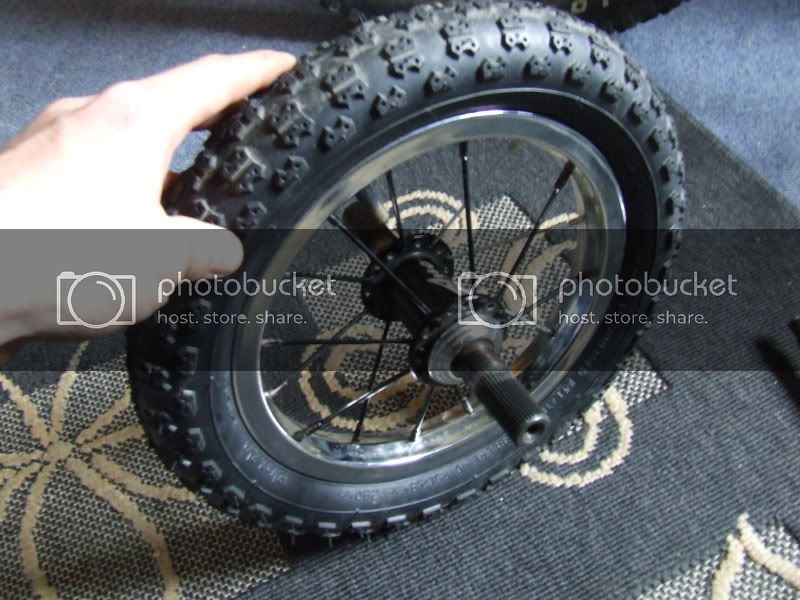Hey guys and girls.
After making this video, I chucked the 12 in the corner and its been there ever since. Recently I bought a new wheel for my trials uni, leaving me with a spare hub and spokes. The rim was no good, it was cracked all around the inside.
So, I started by unlacing the old 19" rim. Some of the spoke nipples were rusted to the spokes so I couldn’t rescue them to re-use, I had to cut a lot of the old spokes to get the hub out.
Once I had seperated the Onza hub from the rim I needed the 12" rim. I unlaced the square-taper hub from the 12" rim which was easy seeing as most of the 16 spokes were snapped!
Now I had all the parts I needed to start building the 12" trials wheel
As you can see the spokes are quite a bit longer than they needed to be. I measured the Onza hub and the 12" rim and worked out that the spokes needed to be about 75mm long. I set to work cutting.
After I had cut enough spokes to the right length I tapped a thread onto the end of each one. I didn’t take any photos of that stage, I have no idea why  Anyway, heres the result. Before and After
Anyway, heres the result. Before and After
Halfway there!
God my hands hurt after tapping 16 of the buggers!
Now I had all the components I needed. Now, obviously the hub has 36 holes and the rim has 16. Thats 8 spokes shared between 18 holes on each flange. I decided to space the spokes on each flange like so: Spoke-hole-spoke-hole-spoke-hole-spoke-hole-hole-spoke-hole-spoke-hole-spoke-hole-spoke-hole-hole
That way the gaps where there are two empty holes are opposite each other and will be symmetrical.
Sadly I didn’t take any photos of actually lacing the thing. I think I was far too engrossed in making sure I was getting it right to remember to take any.
Anyway, heres the final result!
Yes, there are 3 odd spokes. Thats because I ran out of 12 gauge nipples and couldn’t get hold of any.
Heres a shot with the tyre on. All I need to do now is get some new bearings and chuck it back in the frame.
The cranks I am going to use are 140s. The pedals just touch the floor as they go round, but this is a trials uni, so that won’t matter too much. Skinnys will be fine obviously.
Can’t wait to ride it!
Edd
